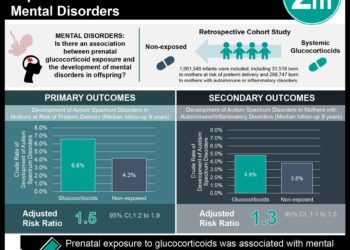Delayed umbilical cord clamping associated with potential antioxidant effect
1. Blood collected from late-clamped umbilical cords (2 minutes after birth) contained significantly increased levels of antioxidants such as: erythrocyte catalase activity, superoxide dismutase, soluble tumor necrosis factor receptor II, and total antioxidant status.
Study Rundown: For years, there has been debate regarding the ideal time to clamp the umbilical cord after birth. As there are many benefits and risks associated with both immediate and delayed cord clamping, no definitive guideline exists. Authors of the current study sought to evaluate this dilemma by focusing on the potential differences in markers of oxidative stress, a proxy for the body’s defense against damaging reactive oxygen products and inflammation signaling associated with cord clamp timing. Researchers found that levels of erythrocyte catalase activity, superoxide dismutase, soluble tumor necrosis factor receptor II, and total antioxidant status were all significantly higher in blood from cords in the late-clamped group, suggesting an increase in antioxidant capacity. Limitations of the study include small sample size and non-randomized group assignments leading to potential selection bias; however, these significant findings may potentially aid clinicians in providing improved neonatal care and ensuring healthy childhood development.
Click to read the study, published today in Pediatrics
Relevant Reading: Effect of timing of umbilical cord clamping of term infants on maternal and neonatal outcomes
In-Depth [quasi-experimental study]: A total of 64 pregnant women in Granada, Spain were enrolled in this study from February – October of 2011. Participants were assigned to either the early-clamped group (within 10 seconds of birth; n = 33) or the late-clamped group (2 minutes after birth; n = 31) in alternating order based on arrival time to the hospital. Once the umbilical cord was clamped, blood samples were taken from both the umbilical vein and arteries to assess the quantity of oxidative stress biomarkers. There were no significant differences between-group demographic differences. T-testing was used to compare early clamping to late clamping. Significantly higher levels of erythrocyte catalase activity (vein- P < .01; artery- P < .001), superoxide dismutase (P < .01), soluble tumor necrosis factor receptor II (p < .001), and total antioxidant status (P < .001) were seen in the late-clamped group when compared to the early-clamped group. No significant between-group differences were found in levels of bilirubin, plasma hydroperoxides, erythrocyte hydroperoxides, and prostaglandin E2.
More from this author: Standardized patient handoff process associated with decrease in handoff errors, Youth exposure to e-cigarette advertisements increasing, Decreased sleep in childhood linked with later central adiposity, Food advergames linked to increased caloric intake in children, Potential association between toddler behavior and infant media exposure
Image: PD
©2012-2014 2minutemedicine.com. All rights reserved. No works may be reproduced without expressed written consent from 2minutemedicine.com. Disclaimer: We present factual information directly from peer reviewed medical journals. No post should be construed as medical advice and is not intended as such by the authors, editors, staff or by 2minutemedicine.com. PLEASE SEE A HEALTHCARE PROVIDER IN YOUR AREA IF YOU SEEK MEDICAL ADVICE OF ANY SORT.







